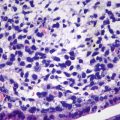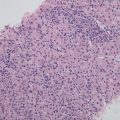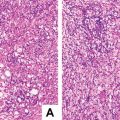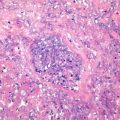is an Academician of Chinese Academy of Sciences, Department of Liver Surgery, Liver Cancer Institute, Zhongshan Hospital, Fudan University, Shanghai, China.
Pathology is the prerequisite for oncology surgeons to make decisions. I can only feel grateful for the contribution made by my fellow pathologists. Having the honor to write a passage for the introduction to this monograph, I am even more overwhelmed. After all, I’m only a clinician, not a basic research fellow. Fortunately there are the two words “my view” in my title. Therefore this passage will just be my personal opinions from the clinical perspective for the reference of those engaged in the same pursuit.
In 2012 the article “Two Hundred Years of Cancer Research” [1] by DeVita and Rosenberg was published on The New England Journal of Medicine, in which the “cellular origin of cancer” put forward by Virchow in 1863 has laid the “pathological foundation” for modern oncology and become the gold standard for cancer diagnosis and the basis for treatment decisions, and Watson et al. discovered the double helix structure of DNA in 1953, EGF and its EDFR in 1979, p53 anti-oncogene in 1981, etc., all these initiating the research of molecular biology and suggesting that the context of cancer research has been gradually transformed from “pathology” to “pathology-biology.” The establishment of the “pathological foundation” of cancer has focused the attention of the great cancer-fighting army on one thing, i.e., employing all available means to eliminate pathologically confirmed tumors, which leads to the development of tumor-eliminating treatments such as surgery, radiotherapy, chemotherapy, interventional therapy (e.g., TACE), and local treatment, hence the substantial progress of curative effect in cancer treatment.
As an oncology surgeon, I’ve realized the distinct differences of liver cancer from the pathological and biological perspectives. For example, in terms of diagnosis, the former focuses on appearance and answers questions of whether it is cancer or what cancer it is, while the latter focuses on biological features, i.e., how is its degree of malignancy. In terms of treatment, the former is about eliminating tumor, while the latter is aimed at decreasing the potentiality of cancer invasion and metastasis and improving the body’s cancer-fighting ability. In terms of means of application, the former has surgery, radiotherapy, chemotherapy, local treatment, interventional therapy, the latest VEGF-targeted molecular targeted curative agent, etc., while the latter emphasizes biological treatment like differentiation inducing therapy and immunotherapy. In terms of prognostic indicator, the former values biological features of morphologic correlation like degree of differentiation, while the latter values biological features of molecular correlation like prognostic molecular predictor. In terms of efficacy evaluation, the former values the effective rate for tumor (complete remission, partial remission, etc.), while the latter values overall survival rate and quality of life.
Now that there is still a long way to go before cancer is conquered, this transformation of context gives us new ideas from the clinical perspective. It is expected that in the future trend of cancer treatment, tumor elimination will still be the most important goal of treatment. Nevertheless, besides the elimination of primary tumor, another important goal will be the modification of residual tumor to decrease its degree of malignancy and the modification of body to increase its cancer-fighting ability. In this way, “transforming the bad” or “surviving with tumor” becomes another “end point” of treatment.
1.1 Surgical Treatment in the Pathological Context
Surgical treatment plays a decisive role in improving the curative effect of liver cancer in the twentieth century. In the 1950s, the regular hepatectomy of liver cancer for the first time improved the curative effect for liver cancer substantially. Started in the 1960s and confirmed in the 1990s, the liver cancer treatment method liver transplantation made part of unresectable relatively small liver cancer treatable, thus extending the benefits to more liver cancer patients. In the 1970s, alpha fetoprotein was used for screening, and the curative effect of resection was doubled through early detection, early diagnosis, and early treatment, especially the local resection of small liver cancer (≤5 cm). In the 1980s, thanks to combined therapy such as surgical hepatic artery ligation, intubation infusion chemotherapy, and radiotherapy, resection after downstaging (reduction) made radical cure possible for a small number of patients with unresectable liver cancer. The rise of local treatment like TACE and radiofrequency ablation has obviously extended the benefits to more patients, among which some were cured after resection of reduced tumor. All of these efforts are aimed at “tumor elimination.” During the past half century, the survival rate of inpatients at the Liver Cancer Research Institute of Zhongshan Hospital, Fudan University (hereinafter referred to as this Institute) has indeed experienced improvement every 10 years, which is attributable to surgical treatment, especially the resection of small liver cancer.
In the “pathological context,” efforts during the past half century are mainly aimed toward “eliminating tumors as many as possible,” which include:
- 1.
Surgery-related: researches on improving resection rate, decreasing operative mortality rate, resection of tumor along its edges, operation method in strict accordance with intrahepatic anatomy, reducing tumor spread during operation, etc.
- 2.
Liver transplantation to treat liver cancer, which is also mainly for the purpose of eliminating tumor even more completely
- 3.
Preoperative and postoperative treatment-related: researches on how to further eliminate residual cancer, such as postoperative radiotherapy, chemotherapy, application of TACE, and application of molecular targeted curative agent sorafenib
However, even though all these efforts have improved curative effect to a certain extent, none of them can solve the problem completely, the greatest bottleneck being postoperative cancer metastasis and recurrence.
Apparently, the metastasis of cancer originates from the cancer cells left behind. And there are two possibilities for the recurrence of cancer: metastatic tumor and another primary tumor, the latter of which falls into the category of cancer prevention. Therefore, the main barrier to improving the curative effect of surgical treatment for liver cancer is cancer metastasis. The most obvious evidence is that in about 40 years, despite the growth of cases of small liver cancer resection at this Institute by hundreds of times, the five-year survival rate is still wandering below 60%.
1.2 Biological Hallmarks of Cancer
The “biological hallmarks of cancer” is a very comprehensive issue, and it would be quite difficult to summarize in one passage. In 2011 the article “Hallmarks of Cancer: The Next Generation” by Hanahan was published in Cell, which may provide a brief summary of the biological hallmarks of cancer [2]. Including a few upcoming hallmarks, ten hallmarks are listed: (1) sustaining proliferative signaling, (2) evading growth suppressors, (3) resisting cell death, (4) enabling replicative immortality, (5) inducing angiogenesis, (6) activating invasion and metastasis, (7) reprogramming of energy metabolism, (8) avoiding immune destruction, (9) tumor promoting inflammation, and (10) genome instability and mutation. Among which, based on my understanding, the former six hallmarks are related to cancer cells, while the latter four involve the whole body, e.g., metabolic regulation, immune function, inflammation-triggered cancer, genetic mutation, and instability. Therefore, cancer originates from cells. However, instead of simple cytopathic effect, this process involves the whole body which is under the influence of external environment and hereditation.
From the clinical perspective, I believe “activating invasion and metastasis” is of the uttermost importance among the abovementioned ten hallmarks of cancer. This is the major biological feature that makes cancer different from benign tumor. Without the potentiality for invasion and metastasis, cancer will become benign tumor, while most of the other hallmarks serve the feature of “invasion and metastasis.”
Since the understanding of the biological hallmarks of cancer invasion and metastasis has been updated significantly in recent years, proper adjustment should be made in the surgical treatment of liver cancer. (1) It was once believed that the enhancement of the potentiality for cancer metastasis is the result of clone screening during cancer progression. Now it is believed that cancer metastasis is a systemic issue; apart from targeting at metastasis, cancer treatment should also attach importance to systemic intervention, which may change the potentiality for cancer metastasis. As mentioned above, four out of the ten cancer hallmarks of the next generation are related to systemic regulation. It is also pointed out in literature that general conditions and intrahepatic tumor control are risk factors of extrahepatic metastasis [3], which also signifies that the prevention of cancer metastasis requires systemic intervention. (2) It was understood that cancer metastasis is a phenomenon of advanced-stage cancer. Now it is understood that cancer metastasis doesn’t manifest advanced stage of cancer, and prevention should start early. In our cooperation with the Americans, the comparison of small and big liver cancer reveals only seven genetic differences, while 153 genetic differences are discovered in the comparison of liver cancer with and without metastasis, suggesting that the genetic change of cancer metastasis occurs during the stage of primary tumor, and even small liver cancer can have strong metastatic potential [4]. This also explains why sometimes the recurrence and metastasis of small liver cancer happens very fast after resection and suggests the importance of early intervention. (3) It was once believed that metastasis is possible for all cancer cells. Now it’s believed that it’s just the cancer stem cells. For example, the EpCAM-positive liver cancer cells are stem-like cells; therefore, cancer stem cells are an important target of the anti-metastasis research [5]. I discovered that treatment with oxaliplatin in nude mouse model for human liver cancer can upregulate stem cell markers (e.g., EpCAM and CD90), while the “Song You Yin” containing five kinds of traditional Chinese medicine can downregulate those markers, reduce metastasis, and prolong survival time [6]. (4) It was once believed that cancer metastasis is in the nature of cancer cells, while now it is believed that immune inflammatory microenvironment is a key factor for cancer metastasis. During our collaboration with the Americans, it was discovered that 17 genes related to immunity and inflammation (not related to cancer metastasis) in the microenvironment around cancer can predict metastasis [7]. In 1889, Paget put forward the “seed and soil” theory of cancer metastasis, emphasizing that seed needs the right soil for growth. However, the discovery in the twenty-first century suggests that the performance of seed can also be influenced by different soils. Existing literature shows that the interaction between cancer stem cells and the microenvironment results in metastasis [8]. This Institute also finds that “Song You Yin” can improve microenvironment and inhibit cancer metastasis through downregulating the cytokines secreted by activated hepatic stellate cells [9]. Thus, a new field of intervention was discovered in anti-metastasis research. (5) It was usually believed that cancer cells could only become more malignant. Now it has been noticed that the potentiality for cancer metastasis can be bidirectional, i.e., it can either become worse or better. Therefore, “transforming the bad” is an important direction of research. It has always been believed that the metastasis potential of cancer gets increasingly enhanced during its development through clone screening, and the latest research also suggests that various cancer-killing therapies promote metastasis of residual cancer. However, differentiation inducing therapy and some Chinese medicine treatment can reduce the potential for metastasis.
All of these new ideas suggest the anti-metastasis research should not only be targeted at cancer cells, especially cancer stem cells, but also microenvironment, which is under the regulation of the whole body. Therefore, besides tumor elimination therapy, researchers should also focus on differentiation inducer, anti-inflammatory agent, immunotherapeutic agent, matrix metalloproteinase, fat metabolism, and other measures of systemic intervention. For instance, for cancer stem cells, the guiding principle of elimination and modification at the same time from the biological property point of view is more comprehensive than simple elimination advocated in the past. Above is the common problem of cancer metastasis. Despite the “individuality” of the biological hallmarks of liver cancer, their “commonness” is the most important. Therefore, the above analysis and statement is also suitable for liver cancer.
1.3 Outlook for Surgical Treatment in the Context of Pathology-Biology
For the past century, we have made every attempt to eliminate liver cancer once it’s been confirmed by pathology. Since the 1990s, the development of molecular biology and systems biology has made us realize that similar to other cancers, liver cancer is not only local lesion but also systemic lesion. In addition to tumor elimination, goals of the clinical treatment of liver cancer should also include modification of tumor and body in the hope of transforming the bad residual cancer or reducing its invasion and metastasis potential and increasing the body’s cancer-fighting ability so as to achieve “surviving with cancer.” Since it’s been proven that even the most radical surgical resection cannot ensure, there are no circulating tumor cells (CTC) left behind. Furthermore, as to the various existing therapies, we should not only recognize their efficacy and side reaction but also notice the “opposite effect” [10] and take countermeasures. This is a shortcut to improving the efficacy of tumor elimination therapy. I believe the conceptual change will broaden the perspective of liver cancer surgery research significantly.
It is expected that in the twenty-first century to improve the efficacy of liver cancer surgery, the goal will be changed from simple elimination of tumor to modification of tumor and body on the basis of elimination of as many tumors as possible. There are multiple ways to improve the efficacy of liver cancer surgery, some of which can promote efficacy significantly, such as early diagnosis and treatment, while others are less impressive, such as researches on distal and proximal resection in liver cancer surgery, surgical indications and complications, etc. Some can improve efficacy substantially, like the research on new therapy; and some improve efficacy in treating certain subgroups of liver cancer, such as the research on indications for some therapy. Later I’ll talk about methods that may greatly improve the efficacy of liver cancer surgery. The following divisions are only for the purpose of emphasizing analysis from different perspectives. As a matter of fact, they are interrelated and inseparable.
1.3.1 Early Diagnosis and Treatment Is Still Important but Limited
It’s been over 40 years since the research on small liver cancer started since the 1970s, but the UICC still puts forward the slogan that “early discovery can save life.” This is because the 10-year survival rate of patients who have received small liver cancer resection is twice as high as that of patients of large liver cancer resection, and there is a negative correlation between the size of liver cancer and the post-resection survival rate. As mentioned earlier, the improvement of prognosis of liver cancer inpatients at this Institute is also attributable to the increase of the percentage of small liver cancer resection. The prognosis of liver cancer is improving in the USA, which can also be attributed to early diagnosis and treatment [11], and the same is true for the increase of liver cancer survival rate in Italy in the past 20 years [12]. The rise of local treatment (such as radiofrequency ablation, which is in fact an extension of surgical resection) and liver transplant in recent years has extended the benefits to more patients of small liver cancer.
Even though there is still more to be researched about early diagnosis and treatment (e.g., genome and proteome technologies can help in the early diagnosis of over half AFP negative liver cancer), the efficacy of various early treatment methods is reaching the limit: as has been noted, the 5-year survival rate of small liver cancer resection hasn’t improved in 40 years; and according to the statistics of 1305 cases, the 5-year survival rate after radiofrequency ablation is merely 59.7%, even for small liver cancer of only 2.2 cm in diameter [13]. This suggests that the bottleneck is still liver metastasis and recurrence after treatment.
Therefore, research on the prevention of metastasis and recurrence of small liver cancer after early diagnosis and treatment will be the key to further improvement of the efficacy of early diagnosis and treatment, which first of all requires predictors of metastasis of small liver cancer after treatment. Even though this Institute has done some research on this [14], more exploration is still needed for it to enter clinical routine.
The past decades have proved that continuing to adopt the method of elimination after surgical resection can keep improving efficacy, but it can’t solve the problem completely. Therefore, we must search for a way out from wider perspectives. I believe the way out is to consider this problem from the perspective of pathology-biology instead of just pathology, i.e., change the strategy of simple elimination to both elimination and modification. For metastasis and recurrence of existing cancer focus, it has already been proven that treatments like resection, radiofrequency ablation, and TACE can improve efficacy. However, for a few residual cancers escaping treatment, the strategy of continued elimination has little effect. There is a lot more to be explored from the biological perspective, such as systemic intervention of nerve, immunity, endocrine secretion, metabolism, anti-inflammation, etc. For instance, this Institute found during experimental research that the combined use of interferon-a and “Song You Yin” after palliative resection of liver cancer can inhibit the enhancement of the metastasis potential of residual cancer induced by palliative resection, thus prolonging survival time [15].
1.3.2 The Combined Treatment Model Will Be Changed
Cancer is a complex disease triggered by multiple factors, involved by various genes, and formed in different stages. It is both a local lesion and a systemic lesion. Therefore, combined treatment is the long-term strategic direction. The functions of combined treatment in surgical treatment are: first, making those with no indications of surgical resection resectable, and second, further improving the efficacy of surgical treatment. The invasion and metastasis potential of cancer is changeable (either for worse or for better); if it can be changed for the better, then surviving with tumor will become a goal. In general, combined surgical treatment can be divided into two categories:
First is the “tumor elimination + tumor elimination” model: the combined and sequential application of surgical treatment and other tumor elimination methods (radiofrequency ablation, intervention, radiotherapy, and chemotherapy) is a strategy based on the pathological context. Atypical example of combined treatment of such model is “resection after downstaging (regression),” which results in failure to improve prognosis of liver cancer resection. I have been engaged in such researches since the late twentieth century [16]. Now the latest literature still has reports such as that gemcitabine + oxaliplatin makes some advanced liver cancer patients treatable [17]. There is still a lot of room for the development of this combined treatment model, e.g., experimental research discovers that the molecular targeted curative agent sorafenib can reduce metastasis and recurrence after liver cancer surgery [18].
Second is the “tumor elimination + tumor/body modification” model: the combined and sequential application of tumor elimination therapy (including surgical treatment) and methods to modify tumor and body reflects the measures taken in the context of pathology-biology. (1) In the case of surgical treatment + biotherapeutic agent, since as early as 2000, this Institute has already discovered that interferon-a can reduce recurrence by inhibiting angiogenesis in experimental research [19] and confirmed its clinical value in clinical randomized controlled trial [20]. (2) In surgical treatment + anti-inflammatory treatment, surgical treatment may cause inflammation and hypoxia, which reinforce each other [21]; like this, some anti-inflammatory agents have already become potential auxiliary anticancer agent [22]. It has already been reported that taking aspirin can lower liver cancer incidence rate among patients of chronic liver diseases [23]. (3) In surgical treatment + antiviral (HBV/HCV) treatment, as reported in literatures, long-acting interferon + ribavirin can reduce postoperative recurrence of C hepatitis-related liver cancer [24]. (4) In surgical treatment +differentiation inducing therapy, arsenic trioxide treatment is effective for a certain type of leukemia, and the working mechanism is to make leukemic cells better differentiated [25]. This Institute also discovered that arsenic trioxide can induce the differentiation of CD133+liver cancer cells, reducing the recurrence of liver cancer after resection in tumor-bearing mice and prolonging survival time. (5) In surgical treatment + traditional Chinese medicine, experimental research by our Institute found out that tanshinone IIA, the extract from salvia miltiorrhiza, can inhibit metastasis after palliative resection of liver cancer and prolong the survival time of tumor-bearing mice. One of its mechanisms of action is normalization of tumor blood vessel endothelium, improving tumor hypoxia through the regulation of HIF-1α, inhibiting the EMT of liver cancer cells, and inhibiting the metastasis of liver cancer [26]. (6) And in surgical treatment + other non-elimination tumor treatments, in the early years, hepatic artery ligation wasn’t one of the surgical treatment methods that can resect liver cancer, similar to the principle of TACE in recent years. Our experimental research finds out that even though simple artery ligation inhibits tumor, it promotes the spread of cancer and does not prolong animals’ survival time. In comparison, combining the use of P13K inhibitor LY294002 can inhibit the EMT caused by hypoxia, thus improving efficacy [27]. This Institute has further confirmed that the mechanism of promoting metastasis of residual cancer by hypoxia is the activation of β-catenin [28]. As to the combination of surgical treatment and systemic intervention, it will be talked about later.
Stay updated, free articles. Join our Telegram channel

Full access? Get Clinical Tree








